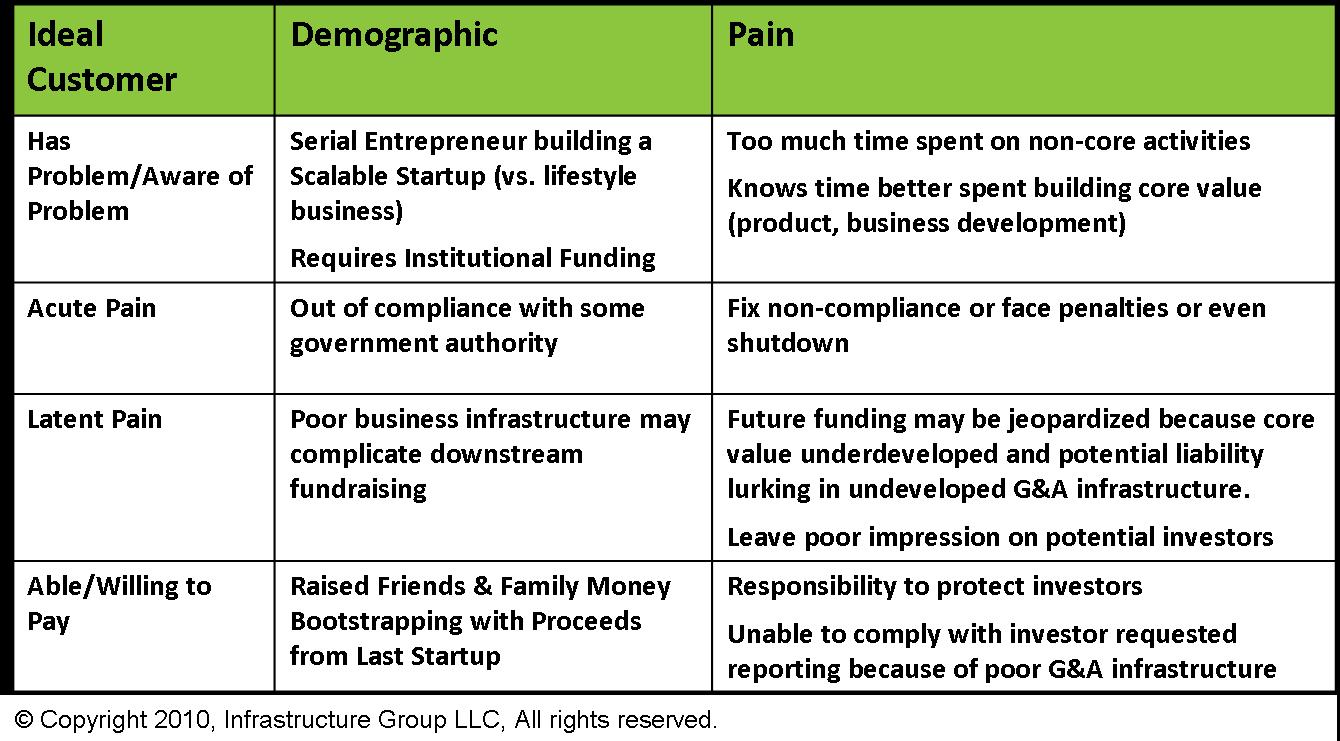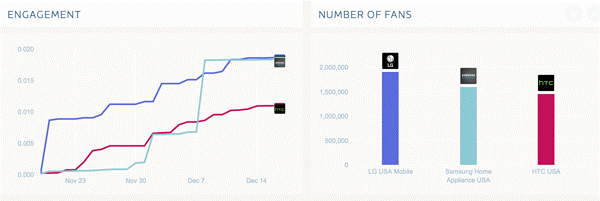I’m sure you’ve heard that social media is a fantastic way to promote your business, but how do you get started? How do you attract those first fans?
I’m going to assume that you understand the basics. You know which social media channel is right for your content. You have set up your profiles, invited your friends, and familiarized yourself with the interface. So let’s skip the easy stuff.
Truthfully, audience-building doesn’t happen immediately. Explosive growth sounds wonderful, but it’s not a strategy. Gaining fans is slowest in the beginning and picks up speed over time.
Growing an audience is about getting the “small breaks.” You might get a retweet from someone that nets 5-20 fans. You might get a string of quick likes that expands the reach of your Facebook post. Or you may get a share from someone with their own relevant following. Focusing on the little wins will add up over time.
So you’re starting at zero. What’s the first step?
Understand Your Audience
This is the most important component of any social media strategy. Truthfully, it’s the most important component of any marketing strategy. The better you know your customer/fan, the better you can craft content (written or visual) that appeals to them.
Who are you trying to speak to? What are their problems and needs? Do they need professional solutions? Do they want entertainment? Do they want news? Advice? What are their short-term and long-term goals?
You can make a few general assumptions to get started, but over time you’ll want to craft a well-researched profile. This is a fictional representation of your ideal customer (sometimes you’ll need more than one if your customers fall into distinct groups).
“Your Ideal Customer Profile is a living, breathing ‘definition’ that you’ll come back to – and modify – often,” says customer success expert Lincoln Murphy.

For instance, if you run a natural food recipe blog, it’s reasonable to assume that your audience would like natural foods, cooking, and recipes. (Shocker, right?) Posting a photo of a made-from-scratch apple pie would please your fans, but a photo of sports car wouldn’t. Even if you like photos of fast cars, you have to stick to your fan’s preferences.
You can tweak your understanding of your fan base in two important ways:
- Monitor their engagement on your page.
Compare different kinds of content. Do they like and comment on one type more than another? If your natural food blog regularly gets 50 likes for a photo of a dessert, but only 10 likes for a photo of breakfast foods, you can please them more with dessert photos.
- Ask them plainly.
Often, it’s best to just ask. Make a text post or poll that asks your fans what they like the most. Ask them directly in comments on other posts. Add an auto-response when someone subscribes to your email list that encourages them to reply with a question that lets you into their head, like, “Where do you want to be in 10 years?” or “What’s your biggest challenge right now?”
As you build a better picture of your target customer, you’ll learn how to communicate with them most effectively.
Research Your Competitors
Once you have identified similar accounts, pay attention to how they operate. What type of content are they posting? What times of the day are they posting? What do their fans seem to like the most?
Fanpage Karma lets you analyze your competitors in a side-by-side manner on the big social networks. It will teach you about their growth, keywords, top posts, frequency of posting, supporters, and other data points.

I don’t recommend copying your competitors, but you should glean whatever data you can from their work. If, for example, you notice that funny memes get thousands of likes on Fridays, you can draw a basic conclusion: People are willing to be sillier at the end of the week.
The best reason to follow your competitors is make yourself aware of share-worthy content. If your main competitor shares a helpful article, your followers probably want to see it. You shouldn’t share your competitor’s post directly, but you can share it as your own.
Engage with Other People
A social network is just that – social. You can post content endlessly, but if you don’t interact with your followers, you’ll struggle to grow your account.
Engaging is an important way to satisfy your overall business goals as well. Engaged fans become subscribers and customers. If a fan is already using your product, she’s more likely to buy again, expand her service, or renew her subscription after she interacts with you on social media.
Engagement can take a lot of forms, depending on your style and the social network you’re using.
- Comment on other posts – By commenting on other people’s content, you’ll take advantage of someone else’s audience. Head over to similar accounts and converse on their posts. Make sure your comments are insightful and helpful.
- Participate in groups – Facebook and LinkedIn have groups (some public, others invite-only) created around countless topics. You could create your own group, but it won’t be much use without people to invite. Instead, join other groups (as your brand page). Post your content and reply to others.
Remember to be a human, not a robot. Stop selling! Be genuine, helpful, and add value to people’s lives.
Gain Visibility with Hashtags
A hashtag is a word or phrase that aggregates content around a topic (example: #contentmarketing). Users who are interested in that topic can click the hashtag or search for it to see all posts that include the phrase.
Hashtags have two important benefits:
- They expand your influence outside of your current audience. Users do not have to be your fans already to see your posts with hashtags.
- It’s a highly targeted method of reaching new people. You know someone is interested in Italian recipes when they’ve searched for “#italianfood.”
Hashtags have varying degrees of success, depending on your network. Stick to one or two hashtags per post on Twitter. Use up to 30 on Instagram, but add a few return lines after your caption copy so they don’t clutter the post.
Hashtags are not prevalent on LinkedIn. You can search for them the same way you search for any text, but they are not clickable in posts.
Interestingly, a 2013 study from EdgeRank Checker found that using hashtags on Facebook leads to decreased reach, regardless of audience size.

Since Facebook’s reach algorithm uses engagement as a factor, I recommend staying away from hashtags on that site.
Post Consistently
One of the most important components of a social media strategy (any content strategy, truthfully) is a consistent posting schedule. Your fans will grow to expect your content. It’s important to capitalize on this in the early days, even though it will feel like you’re posting for no one. If you abandon them, they’re likely to stop engaging or unfollow your account.
I recommend posting several times each day. Most users don’t stare at our accounts all day, so it’s easy to miss your content. On Instagram, Twitter, and LinkedIn, posts are shown
Chronologically. So if a user decides not to scroll far enough, they might miss your content.
If something worked well on social media, post it again! Keep track of your best performing posts and use that information to fashion new posts and repost older content. For instance, if you notice a particular blog article received multiple retweets, schedule it again and again (with varying copy).
- 1st share: Title + link
- 2nd share: Quote from article + link
- 3rd share: Main point from article + link
- 4th share: Content upgrade + link
- 5th share: Ask a question + link
You get the idea. Don’t post your content and forget about it. Squeeze every drop of value out of it you can.
The best way to ensure that you have a thorough posting spread is to schedule a majority of your posts ahead of time. Create what you can in week- or month-long blocks. Use a social media scheduling tool like Buffer to set up an interval queue.
(The AudienceOps Calendar is coming in early 2017. It’s a comprehensive content production and promotion tool designed for content marketers of all sizes. It’s based on the profitable process we use right here, but still offers flexibility. Learn more.)
You can also schedule posts for specific times. At AudienceOps, we use a production schedule with generous time padding for our content and our clients. Blog posts are scheduled weeks in advance along with their corresponding social media posts and email newsletter. On the day a blog is set to publish, we don’t need to do anything. Everything is set in place and we’re working on content three weeks out.
That isn’t to say you should schedule all of your content ahead of time. Some content you’ll want to share as you come across it, like time-sensitive articles, viral memes, or content that relates to something you’ve done recently.
Too much automation and you’ll come across as a robot. Too much “live content” and you’ll invest more time than necessary. The trick is finding a balance that works for you.
Quick Tips
Here are some best practices that every brand should follow to boost their fan counts.
- Add social sharing buttons to your website content so people can share as they read.
- Add links to your social media accounts in the header, sidebar, or footer of your website.
- Add links to your social media accounts in your email signature. (Use WiseStamp to create a professional email signature for free.)
- Follow relevant accounts. When you follow others, they are notified of the new follower. This gives them an opportunity to discover your account. Even if they don’t follow you back, your feed will be populated with their content, which may be worth sharing to your followers.
- If you already have an audience on one social network and you’re trying to break into another, ask your current followers to follow you on the additional profile.
Let me leave you with this: Social media is a grind.
You may see your favorite accounts with hundreds of thousands of followers and think, “They popped up overnight!” In reality, most of those accounts are years old that eventually reached a critical mass where they could grow exponentially.
Don’t stress about your follower count every day. Don’t obsess over your retweets or comments. Spend your energy creating genuine, valuable content for your followers. Stick to your strategy and the fans will come.